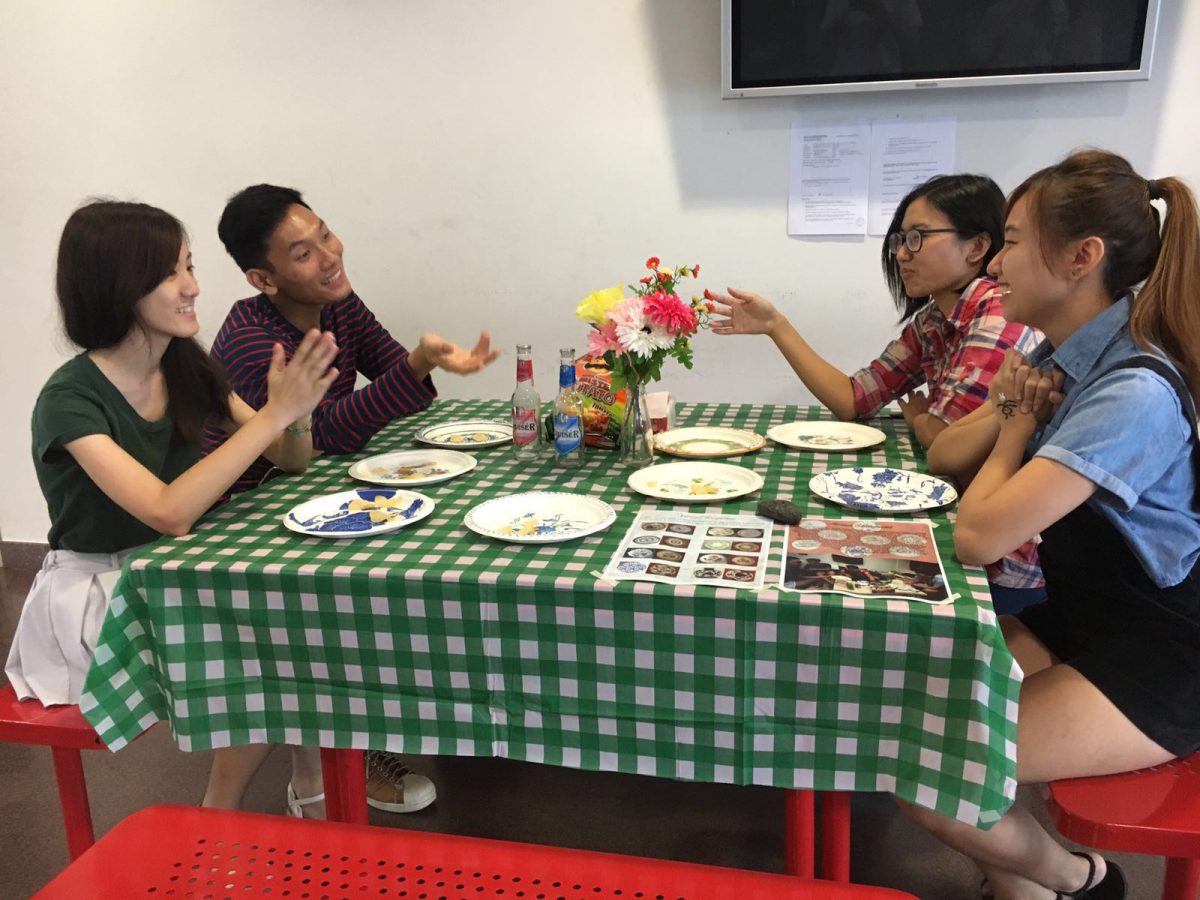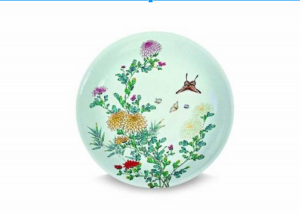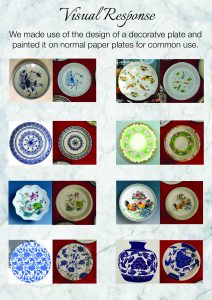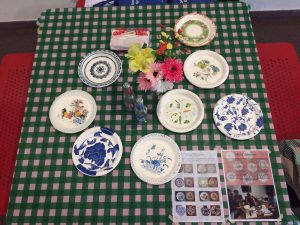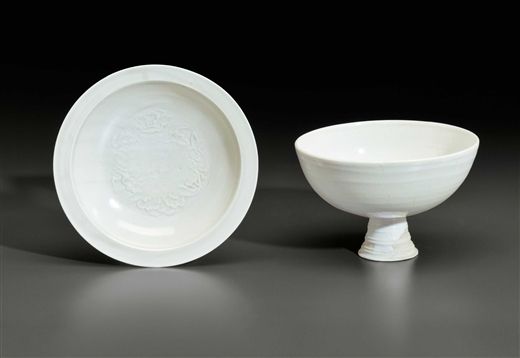In reproducing Chinese porcelain designs on paper plates, we seek to address its changing nature, from decorative items to utilitarian wares.
The plate we referred to was the Chrysanthemum dish made in the Qing dynasty (1644-1912), found in the Asian Civilizations Museum.
Chrysanthemum dish
China, Jingdezhen kilns, Qing dynasty
Porcelain with depictions of plants and butterflies
After research and group discussions, we settled on the uses of Chinese porcelain designs and comparism of the past and future uses. In the past, such plates were deem precious and placed for decorative admiration yet such designs can be found on plates used for eating now. To emphasise on the shifting nature of the designs now, we use paper plates, a disposable item easily thrown away after use. People are more blasé about such designs and with printed technology, it is easy to throw away what might be deemed precious centuries ago.
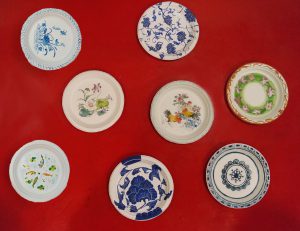
To emulate the casual setting we were going for, we decided to set up a picnic table where such plates are more commonly used. Bottles, chips, and flowers are provided to create a friendly atmosphere where friends can easily gather to chat.
Through this project, I realize art is never just a reflection of its own period but also an instigator of critical questions to an artist, art students, art historian, anybody. Yes, it does represent the period from when it came from but such art inspires the next generation of art and that is how we fit in. Looking at a plate created centuries ago prompted us to think about the ever-changing nature of goods and compare them. It can go many ways then, we can ask ‘why has it changed?’ or ‘when did it change?’, the questions are endless. In creating a visual response, we are creating a conversation with the piece which I found intriguing and frankly, rather amazing.
